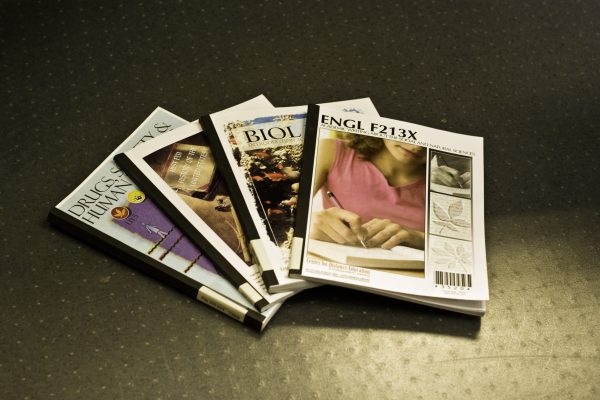Departing director reflects on 24 years of distance ed
September 27, 2018
Marissa Carl-Acosta
907-455-2070

Download text and photo captions here.
Twenty-four years ago, Carol Gering showed up for her first day of work as a part-time receptionist for the University of Alaska Fairbanks Center for Distance Education, now known as eLearning. Together, she and UAF’s distance education unit evolved to better support students who want higher education with flexible options.
Back in 1994, CDE was a team of eight (three of whom are still working at eLearning). They primarily offered paper-based courses for people outside of Fairbanks. Students could enroll at their convenience and had a year to finish the materials. Instructors provided feedback as each lesson was submitted by postal mail, email or fax.
“The real emphasis was on making education available to people in rural communities who wouldn't otherwise have access to higher education,” Gering said.
It worked. Last year 5,378 students took advantage of the university’s online courses. Nanook Nation extended to more than 250 communities throughout Alaska, all 50 states, Washington, D.C., and 29 other countries around the globe. In the past five years, under Gering’s leadership, the number of students enrolled in UAF’s online courses has grown 18.5 percent.
Next month, Gering and the distance education unit will take yet another turn in their journeys.
On Oct. 29, 2018, UAF eLearning and Distance Education will change its name to UAF eCampus to better emphasize the strategic role online courses and programs play at the university.

On the same day, Gering, who has been eLearning’s executive director since 2012, will start a new job as associate vice provost for online and distance education at the University of Oregon, which offers some online courses but has never had a coordinated effort. Gering’s goal will be to grow Oregon’s selection of courses and eventually develop the infrastructure for fully online degrees.
“There's a challenge to do something new that hasn't exactly been done yet,” she said.
Gering’s history at UAF shows she is ready for such a challenge. After joining CDE, she transitioned from reception to a computing and network job. She took a one-credit web-design class and created the unit’s first website using HTML, and in about 1996 installed a server and software to deliver UAF’s first online course.
“We didn’t know the future or if it would take off, but it seemed like the right thing to do,” Gering said. “And at the same time, similar efforts were taking shape all across the nation.”
Blackboard, a learning management system for online and face-to-face courses, was implemented at UAF in 2000, and online options started gaining momentum.
Gering became the design team manager, leading UAF’s first group of instructional designers, who were brought in to support faculty as they developed course content for both online and paper-based courses. By 2009, UAF offered its first fully online program, the Associate of Applied Science in applied business.

Soon after, Gering was promoted to associate director and the unit focused on improving student success rates in addition to providing access to education. UAF started discontinuing yearlong paper-based courses, which had fairly low success rates, and moved toward richer online courses that fostered community and had routine deadlines.
The success rates in UAF’s online courses continue to rise and are approaching the success rates of face-to-face courses. And the university now offers more than 30 fully online programs ranging from 15-credit occupational endorsements to master’s degrees.
Gering’s own experiences helped her understand the importance of flexible courses. She completed a master’s degree of education in curriculum and instruction and a doctorate in the interdisciplinary field of online education and psychology from UAF while working full-time.
“In a virtuous circle sort of way, the challenges of developing online courses drove me to keep learning, and my experiences as a student confirmed my belief in the need for online courses,” Gering said. “Because I was a nontraditional student, I understood firsthand the importance of flexible educational alternatives for working professionals.”


